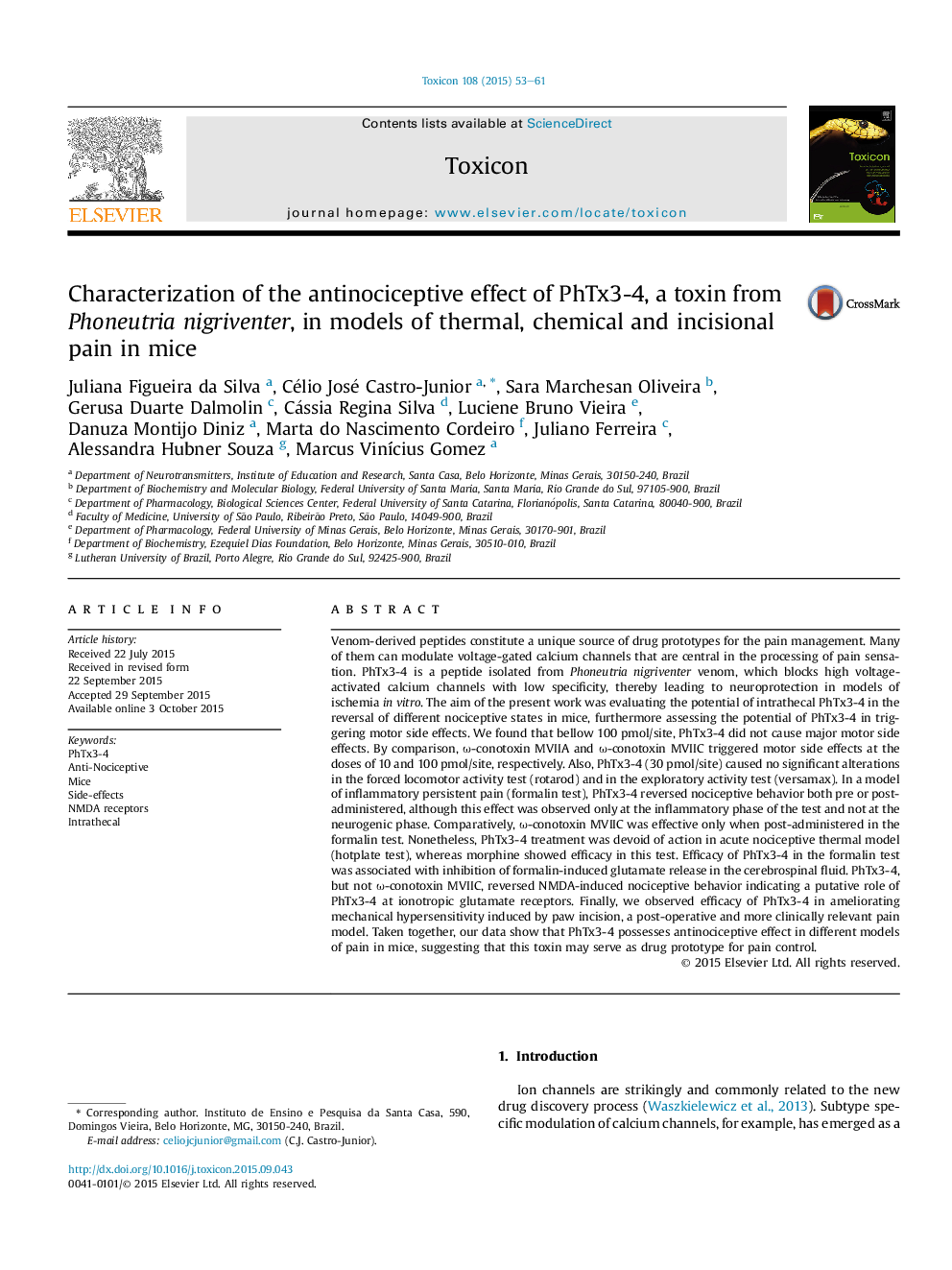| Article ID | Journal | Published Year | Pages | File Type |
|---|---|---|---|---|
| 8395132 | Toxicon | 2015 | 9 Pages |
Abstract
Venom-derived peptides constitute a unique source of drug prototypes for the pain management. Many of them can modulate voltage-gated calcium channels that are central in the processing of pain sensation. PhTx3-4 is a peptide isolated from Phoneutria nigriventer venom, which blocks high voltage-activated calcium channels with low specificity, thereby leading to neuroprotection in models of ischemia in vitro. The aim of the present work was evaluating the potential of intrathecal PhTx3-4 in the reversal of different nociceptive states in mice, furthermore assessing the potential of PhTx3-4 in triggering motor side effects. We found that bellow 100 pmol/site, PhTx3-4 did not cause major motor side effects. By comparison, Ï-conotoxin MVIIA and Ï-conotoxin MVIIC triggered motor side effects at the doses of 10 and 100 pmol/site, respectively. Also, PhTx3-4 (30 pmol/site) caused no significant alterations in the forced locomotor activity test (rotarod) and in the exploratory activity test (versamax). In a model of inflammatory persistent pain (formalin test), PhTx3-4 reversed nociceptive behavior both pre or post-administered, although this effect was observed only at the inflammatory phase of the test and not at the neurogenic phase. Comparatively, Ï-conotoxin MVIIC was effective only when post-administered in the formalin test. Nonetheless, PhTx3-4 treatment was devoid of action in acute nociceptive thermal model (hotplate test), whereas morphine showed efficacy in this test. Efficacy of PhTx3-4 in the formalin test was associated with inhibition of formalin-induced glutamate release in the cerebrospinal fluid. PhTx3-4, but not Ï-conotoxin MVIIC, reversed NMDA-induced nociceptive behavior indicating a putative role of PhTx3-4 at ionotropic glutamate receptors. Finally, we observed efficacy of PhTx3-4 in ameliorating mechanical hypersensitivity induced by paw incision, a post-operative and more clinically relevant pain model. Taken together, our data show that PhTx3-4 possesses antinociceptive effect in different models of pain in mice, suggesting that this toxin may serve as drug prototype for pain control.
Related Topics
Life Sciences
Biochemistry, Genetics and Molecular Biology
Biochemistry, Genetics and Molecular Biology (General)
Authors
Juliana Figueira da Silva, Célio José Castro-Junior, Sara Marchesan Oliveira, Gerusa Duarte Dalmolin, Cássia Regina Silva, Luciene Bruno Vieira, Danuza Montijo Diniz, Marta do Nascimento Cordeiro, Juliano Ferreira, Alessandra Hubner Souza,
